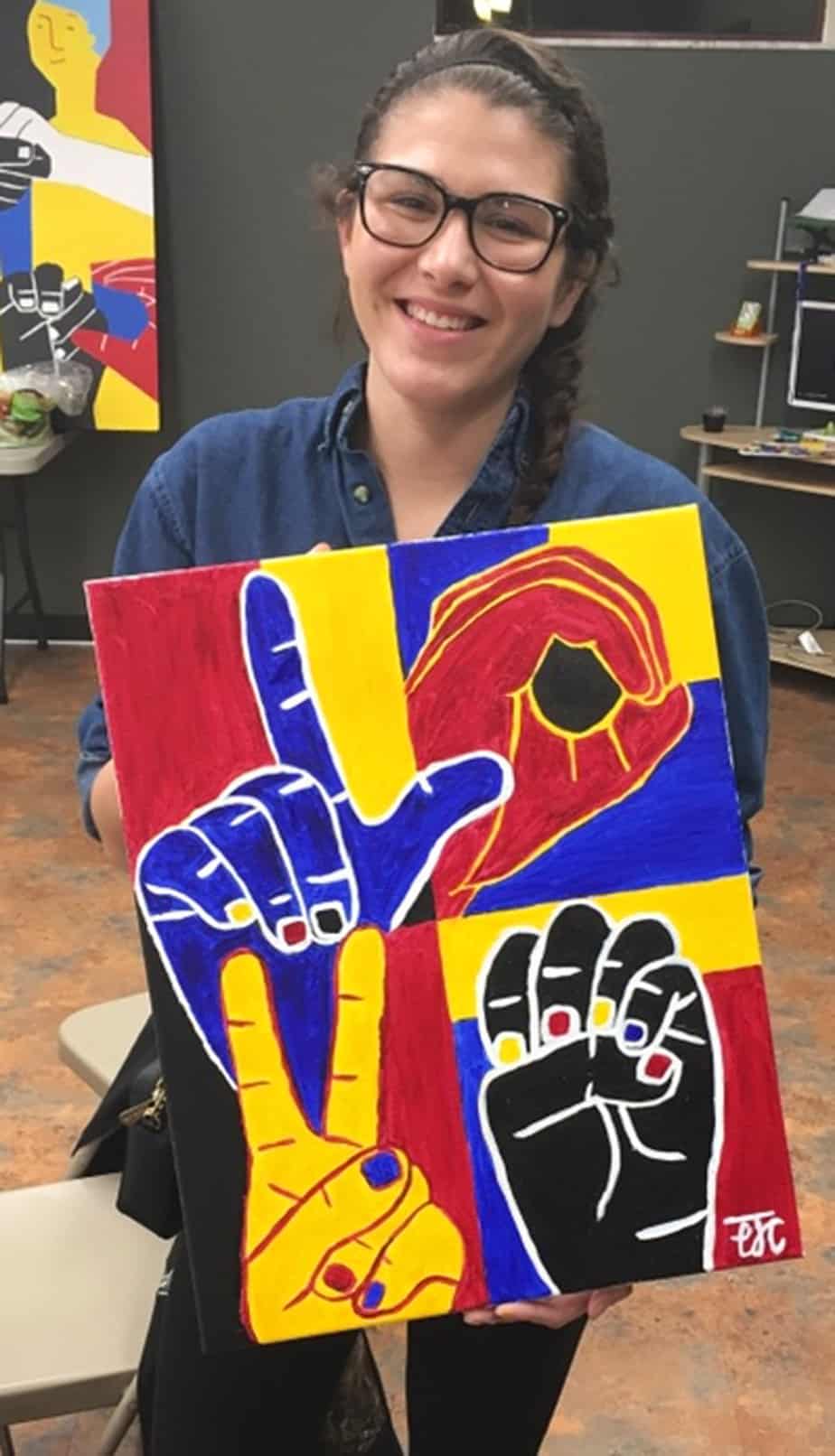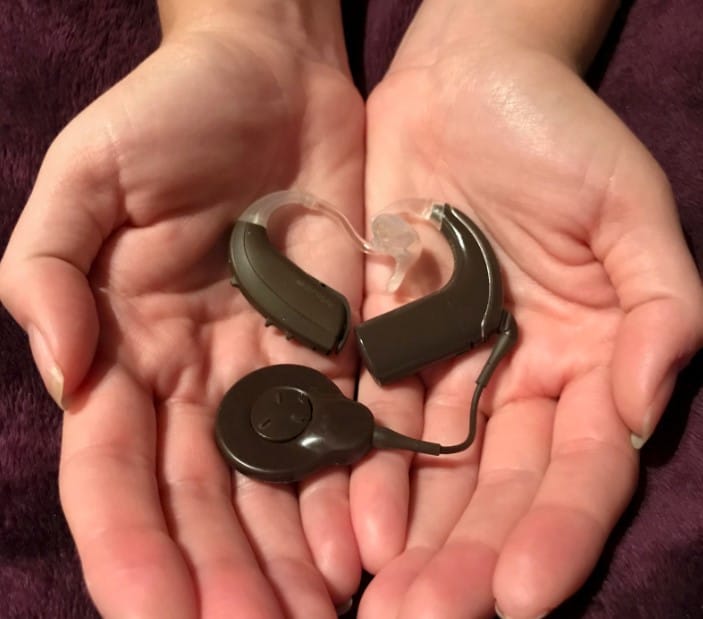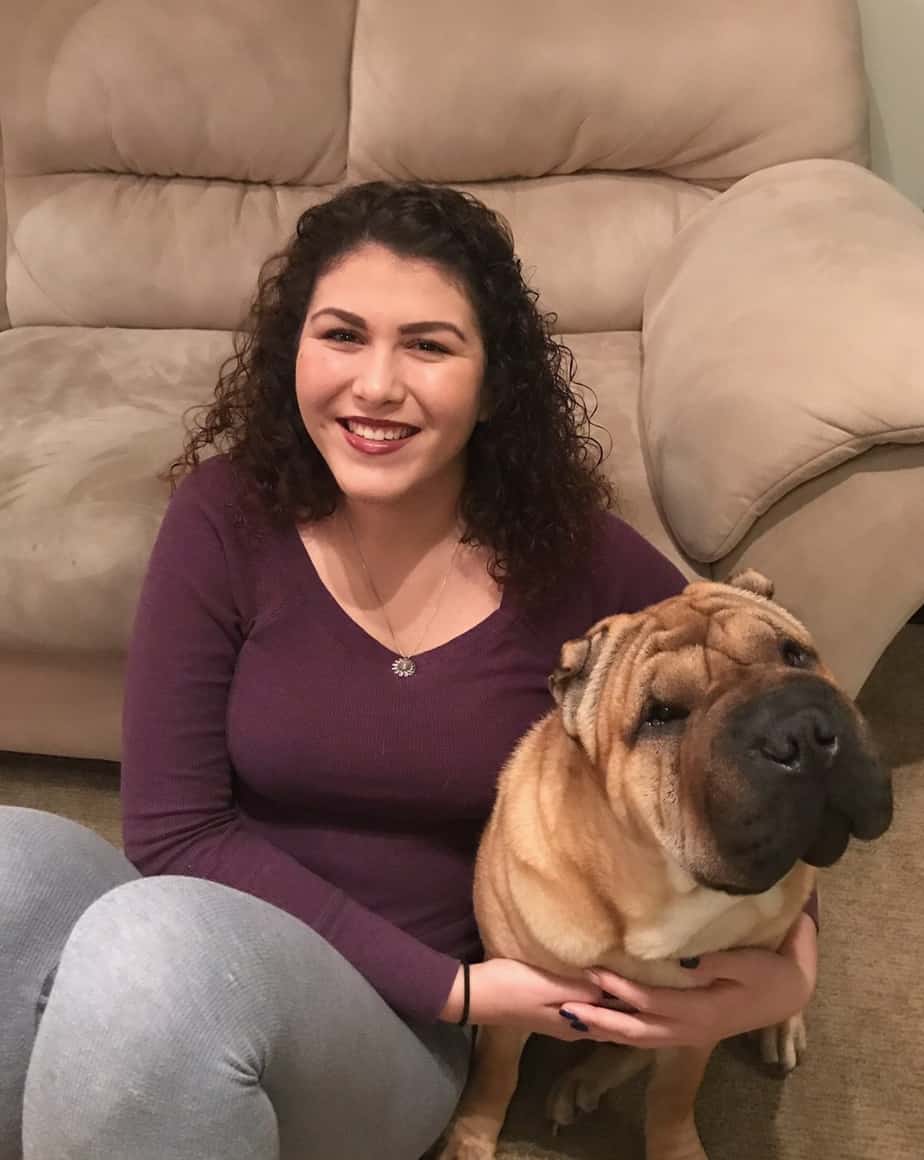Emily C. grew up with hearing loss and while in college, training to be an audiologist, her hearing declined further, making her a candidate for a cochlear implant. Having enjoyed ReSoundTM hearing aids and wireless accessories for years, the partnership between ReSound and Cochlear to bring the world’s only SMARTbimodalTM hearing solution to market helped Emily make her decision to move forward with the Cochlear brand of cochlear implants. See her story below:
 “My paternal grandmother was one of the first people who noticed something was wrong. She took care of me when my parents were at work. Because she primarily speaks Spanish, I would tell her things like, ‘No oye,’ which means, ‘I didn’t hear it.’ I was just a toddler.
“My paternal grandmother was one of the first people who noticed something was wrong. She took care of me when my parents were at work. Because she primarily speaks Spanish, I would tell her things like, ‘No oye,’ which means, ‘I didn’t hear it.’ I was just a toddler.
After seeing multiple ENTs (ear, nose and throat doctors), an audiologist finally identified that I had sensorineural hearing loss, and I was fit with hearing aids immediately. I had a history of ear infections, sinus infections and high fevers. However, they weren’t the cause of my hearing loss, which is still unknown.
I did extremely well in school, without the need for speech therapy. I taught myself how to read lips. I was in advanced classes. I used an Assistive Listening Device (ALD) for a few years in elementary school, but I didn’t like the attention I got from students; I wanted to look like everyone else. I grew up in a small town and I was always the only student in my classes who had hearing aids, so I tried not to make it noticeable.
In college, I decided to pursue a career in audiology, while also immersing myself in the Deaf community. I did not have access to American Sign Language growing up, and although I knew I was unique, I wish I had known someone who was my age and wore hearing aids when I was little. I didn’t know anyone who could really understand the struggles I sometimes faced because I was Hard-of-Hearing. All of that changed when I began learning about audiology and Deaf studies, and how to interact with individuals regardless of their mode of communication.
When I was applying to graduate school, my hearing in my right ear significantly got worse. By this time, my hearing loss had progressed slowly over the years. No matter how loud the volume was for my right ear, everything still sounded muffled. I was now a cochlear implant candidate. I decided to put that aside and focus on getting into an audiology graduate program instead, in case I needed to leave the state to do so. I got accepted into a program and I graduated from college with two degrees, audiology and Deaf studies.
After graduating from college and moving to a new city, graduate school was my main focus. I realized how much more exhausting it was to learn new material with only one ‘good ear.’ I had no energy to study after classes, and it was extremely difficult to retain information because of how reliant on visual cues I had become. Even with the ReSound Multi-Mic, I still struggled to make sense of what the teacher was saying while typing notes and reading lips all at the same time. I had to ask people to repeat themselves more often too.
After a while, it became too exhausting to make the effort to speak up. I began to withdraw myself from going out to social gatherings or talking in groups. I stopped talking on the phone with my family because it was too hard to understand them. Whenever I was around people who knew sign language, it was a different story. It was a seamless transition to a visual language, and I am relieved that I had another means of effective communication with people. Although I love my Deaf identity and I love my Deaf community, I knew I needed to be a part of both Hearing and Deaf worlds again. It was time to look into the cochlear implantation process.
Choosing a hearing solution
 I immediately knew I wanted to go with a company that allowed bimodal capabilities and direct streaming. The less equipment and gadgets to mess with, the better. I really liked ReSound’s hearing aids, their Made for iPhone hearing aids and their accessories, so that is ultimately why I decided to go with Cochlear as my cochlear implant brand. It seemed like ReSound and Cochlear have been on the fast track for technological innovations, and with the FDA approval for the Nucleus® 7 Sound Processor and its bimodal connectivity with the ReSound hearing aid, the choice was a no-brainer for me. Aesthetics have always been important to me, aside from being able to hear, of course.
I immediately knew I wanted to go with a company that allowed bimodal capabilities and direct streaming. The less equipment and gadgets to mess with, the better. I really liked ReSound’s hearing aids, their Made for iPhone hearing aids and their accessories, so that is ultimately why I decided to go with Cochlear as my cochlear implant brand. It seemed like ReSound and Cochlear have been on the fast track for technological innovations, and with the FDA approval for the Nucleus® 7 Sound Processor and its bimodal connectivity with the ReSound hearing aid, the choice was a no-brainer for me. Aesthetics have always been important to me, aside from being able to hear, of course.
I LOVE how the Nucleus 7 Sound Processor looks in comparison to the previous generation Nucleus 6 Sound Processor. It is lighter and smaller but with more capabilities and access to sound with the SMARTbimodal solution. The connectivity to the iPhone®* with both devices is amazing!
I can easily switch between programs, including streaming accessories, with my iPhone. I like that phone calls and music streaming go to both ears when the Bluetooth® connection is activated, as listening with two ears has been proven to enhance speech understanding. I stream music when studying or working out. I also highlight text from my notes, the news app, or other blocks of text and utilize the text-to-speech capability for auditory training; reading along helps me pair the sound to the words.
I am enjoying the Nucleus® Smart App for the Nucleus 7 too. I like how I can have access to data logging and see what environments I’m in throughout my day. Also, if I’m in SCAN** mode, I can visually see what my implant is processing depending on the environment I’m in. I can adjust the listening ratios between the streamer and microphones on my devices, which helps me determine how much of my surroundings I want to hear while in streaming mode. When I am in a noisier environment, I adjust the sensitivity for the implant. I lower the sensitivity level so my processor does not pick up sounds further away from me, and it enhances the ability to hear those closer to me. I adjust the sensitivity to its original level after I leave the noisy environment. All of this is helpful as I continue to rehab and understand how to optimize to achieve my best hearing performance.
Rehabilitation to make it worthwhile
 I’m still very new to my cochlear implant and am continuing to work on understanding open set speech with it. It has been a struggle, but I am hopeful it will improve in time. My audiologist is amazing and I trust her strategies for MAPping; we are trying many things to improve the quality of sound for me. I am wearing my sound processor all day, every day, even when listening to music, to help with my rehabilitation.
I’m still very new to my cochlear implant and am continuing to work on understanding open set speech with it. It has been a struggle, but I am hopeful it will improve in time. My audiologist is amazing and I trust her strategies for MAPping; we are trying many things to improve the quality of sound for me. I am wearing my sound processor all day, every day, even when listening to music, to help with my rehabilitation.
Some goals of mine are to be able to go drive-thru windows and to talk on the phone with unfamiliar speakers again. As a frequent concert-goer, I hope my cochlear implant makes the music experience even better. These goals may seem small to some, but for me, it is important to set realistic and short-term goals and work my way up to bigger goals.
In the meantime, I am noticing environmental sounds I never heard before! I have a Chinese Shar Pei and he makes the funniest sounds! The other day I heard a whooshing sound in my apartment, water running through pipes from the unit next to me. I hear keyboards clacking in class, and ice crackling in my water. It has been a long journey, and there will be ups and downs, but it is the little things that make it worthwhile.”